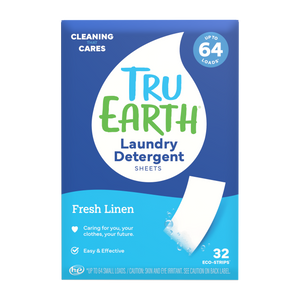As our awareness of environmental issues grows, so does our interest in adopting eco-friendly products. However, navigating the topic of sustainability can be confusing.
In this guide, we'll demystify eco-friendly products by addressing commonly asked questions, providing clarity and insight into making more environmentally conscious choices.

What Defines an Eco-Friendly Product?
Understanding what makes a product eco-friendly is fundamental. Eco-friendly products are those designed to have minimal environmental impact throughout their lifecycle. This includes their production, use, and disposal.
They often prioritize renewable resources, reduced energy consumption, and minimal waste generation, contributing to a more sustainable and environmentally responsible consumer culture.
Are Eco-Friendly Products More Expensive?
A prevailing concern is whether choosing eco-friendly products will break the bank. While it's true that some sustainable options may have a higher upfront cost, it's essential to consider the long-term savings and benefits.
Many eco-friendly products are durable and energy-efficient, leading to lower utility bills and less frequent replacements. Additionally, as demand for sustainable options grows, prices become more competitive, making them increasingly accessible.
How Can I Identify Genuine Eco-Friendly Products?
The market is flooded with products claiming to be eco-friendly, making it challenging to discern the genuinely sustainable options.
Look for third-party certifications from reputable organizations, such as the Forest Stewardship Council (FSC) for wood products or ENERGY STAR for energy-efficient appliances. Additionally, read product labels and packaging for information on materials, recycling instructions, and the company's commitment to environmental responsibility.
Do Eco-Friendly Products Really Make a Difference?
A common question revolves around the impact of individual choices. It's important to recognize that collective efforts drive change. While one person switching to eco-friendly products may seem inconsequential, the cumulative effect of a growing number of people making sustainable choices is significant.
By supporting eco-friendly products, consumers contribute to the demand for environmentally responsible manufacturing practices, influencing industries to adopt more sustainable approaches.
Can Eco-Friendly Products Be as Effective as Conventional Ones?
A misconception is that eco-friendly alternatives may compromise effectiveness. However, technological advancements and increased demand have led to the development of eco-friendly products that perform as well as, if not better than, their conventional counterparts.
Many sustainable options boast comparable or superior functionality, whether it's cleaning products, clothing, or building materials.
Are All Packaging Alternatives Better for the Environment?
Reducing packaging waste is a primary goal of eco-friendly products, but not all alternatives are equally beneficial. Biodegradable and compostable packaging options are gaining popularity, but their effectiveness depends on proper disposal methods.
Some materials may require specific conditions to break down; if disposed of improperly, they may contribute to environmental issues. It's essential to understand the disposal requirements of alternative packaging to ensure they align with eco-friendly goals.
Are Eco-Friendly Products Only for Certain Lifestyles?
Another common misconception is that adopting eco-friendly products is exclusive to a particular lifestyle or income level. In reality, there are sustainable options for various budgets and preferences.
From affordable reusable grocery bags and energy-efficient light bulbs to luxurious eco-friendly fashion brands, individuals from all walks of life can find options that align with their values and choices.
How Can I Make My Daily Routine More Eco-Friendly?
Transitioning to an eco-friendly lifestyle can be a partial overhaul. Simple changes in daily routines can make a significant impact. Start by incorporating reusable items such as water bottles, bags, and containers.
Reduce energy consumption by turning off lights and electronics when not in use. Choose products with minimal packaging, and consider buying bulk to reduce waste. These small adjustments collectively contribute to a more sustainable lifestyle.
What Role Do Eco-Friendly Products Play in Reducing Carbon Footprints?
Reducing carbon footprints is a critical aspect of combating climate change. Eco-friendly products play a vital role in this effort by promoting energy efficiency, responsible resource use, and sustainable manufacturing processes.
For example, choosing energy-efficient appliances or opting for products made from recycled materials helps decrease the overall carbon footprint associated with consumption.
How Can I Dispose of Eco-Friendly Products Responsibly?
Proper disposal is a key component of an eco-friendly lifestyle. Many eco-friendly products are designed to be recycled or composted, but it's essential to follow local waste management guidelines.
Some materials may require specialized recycling facilities and compostable items should be disposed of in appropriate compost bins. By understanding the disposal requirements of eco-friendly products, consumers can ensure they contribute positively to waste reduction efforts.

Final Thoughts: Empowering Through Informed Choices
Eco-friendly products are rich with possibilities, but navigating them requires information and awareness. Individuals can make informed choices that align with their values by understanding what defines eco-friendliness, identifying genuine products, and debunking common myths.
Eco-friendly living is not a one-size-fits-all concept; it's about making conscious decisions that collectively lead to a more sustainable and harmonious relationship with our planet. As consumers become more informed and demand sustainable options, the impact of eco-friendly choices will continue to grow, creating a positive ripple effect for generations to come!

